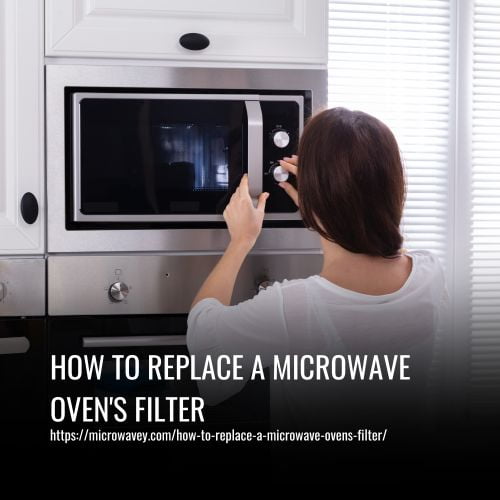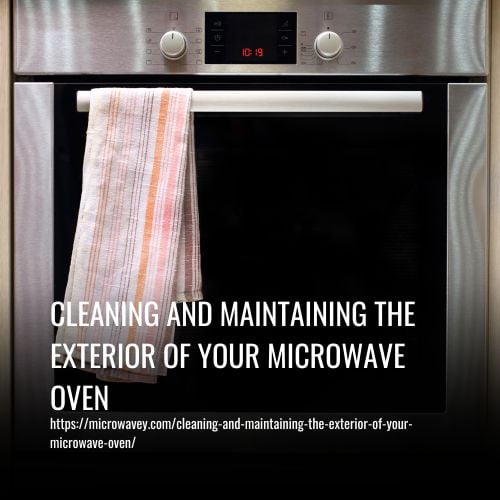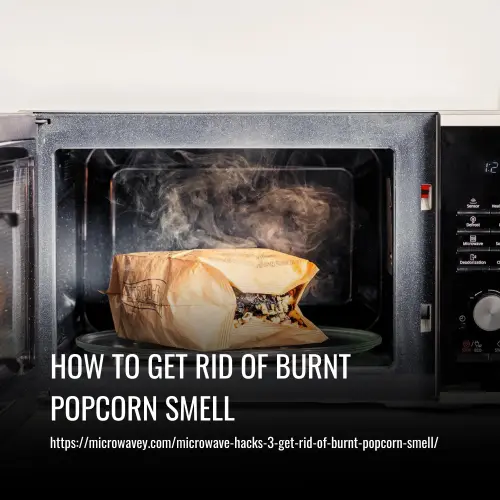How To Replace A Microwave Oven’s Filter
It might be time to replace the filter. The filter in a microwave oven helps to trap grease, odors, and smoke, ensuring your food is safely prepared.
To Replace A Microwave Oven’s Filter, follow these steps:
- Gather Required Tools And Supplies.
- Disconnect Power.
- Remove The Old Filter.
- Clean Out The Filter Compartment.
- Install The New Filter.
- Fasten The Filter.
- Reattach The Vent Cover.
- Reconnect Power.
- Check For Tight Seals.
- Test The Microwave.

1. Gather Required Tools And Supplies:
Replacing a microwave oven filter may seem like an overwhelming task at first, but with the right tools and supplies it’s actually quite simple.
Picture yourself as a professional repair technician in full gear: protective eyewear, gloves, and all the necessary tools for the job laid out before you.
Now that you feel prepared to tackle this project, let’s identify which specific tools are needed and evaluate alternatives accordingly.
A Phillips head screwdriver is essential for loosening screws on the oven’s exterior housing while pliers can help remove stubborn parts inside of the unit.
A putty knife or needle nose pliers might also come in handy depending on your model of microwave oven and its age.
If available, use manufacturer-approved replacement filters rather than generic ones – they tend to fit better and last longer.
Gather these items ahead of time so when it comes time to replace the filter you have everything ready to go!
2. Disconnect Power:
Before beginning to replace a microwave oven’s filter, it’s important to ensure that all power sources are disconnected. To do this, I always start by checking the voltage on the appliance itself and making sure that there is no current running through the wiring. This step should never be skipped in order to keep yourself safe while performing any kind of repair or maintenance work.
The next steps involve disconnecting the power source:
- Unplugging the cord from the wall outlet;
- Removing any batteries if applicable;
- Disconnecting wires connecting to other devices;
- Turning off circuit breakers at main fuse box.
Once you have completed these four steps, you can move onto installing new wiring into the device before mounting back up your replacement filter.
3. Remove The Old Filter:
First of all, you’ll need to remove the old filter from your microwave oven. Before doing this though, make sure that the power is disconnected and any excess moisture removed. This will help ensure a safe cleaning process for both you and your appliance!
Once it’s been unplugged and dried off, carefully unscrew or detach the filter from its housing in the ceiling of the oven. Afterwards, wearing protective gloves if necessary, use a damp cloth to clean away any lint or dirt particles that may have collected on or around it during its time in service.
Then take a few moments to inspect the area where the filter was located–it should be free of dust and debris before inserting a new one. Also follow some basic safety tips while replacing your filter such as not operating with an open cabinet door and never placing anything inside while cooking is taking place.
With these steps in mind, you are now ready to insert a brand-new replacement filter into your microwave oven!
4. Clean Out The Filter Compartment:
The next step in replacing your microwave oven’s filter is to clean out the filter compartment. You may feel like you are at a crossroads, with no way of knowing what lies ahead. But don’t worry – if you follow these steps and use caution, it will be easy!
Here’s what needs to be done:
- Remove any remaining pieces or particles from the filter compartment.
- Use a soft cloth dampened with warm water and mild detergent to wipe down the interior walls of the filter compartment, making sure all residues have been removed entirely.
- Vacuum up any dust or debris that has accumulated inside for improved air circulation and airflow issues.
Making sure everything is completely clean will ensure your new filter functions properly once installed and give you peace of mind that your appliance won’t malfunction due to clogged filters again anytime soon! So take your time, do it right, and enjoy years of cooking without having to deal with this process ever again!
5. Install The New Filter:
First things first, when it comes to replacing a microwave oven’s filter, you need to make sure you have the right model. Compare models side-by-side in order to ensure that they fit and check requirements for any additional features or components. Now let’s get down to business and install the new filter.
I’ll start by taking out the old one: open up the door of your microwave oven and gently remove the grill cover on top of the unit. You should be able to access the filter after removing this piece. Next, use either pliers or a flathead screwdriver to disconnect mounting clips from each side of the filter frame – these will hold it in place inside your microwave oven. Once detached, pull off the entire assembly carefully so as not to damage other wiring or components nearby.
| Step | Description | Tool Required |
|---|---|---|
| 1 | Remove Grill Cover | No tool required |
| 2 | Disconnect Mounting Clips | Pliers / Screwdriver |
| 3 | Pull Off Entire Assembly | No tool required |
Now that we’ve got our old filter out of there, installing its replacement is easy! All you need to do is insert it into position while ensuring all electrical connections are securely attached before pushing back any covers or panels that were removed during disassembly. Finally, turn on your microwave oven and test run with a few quick cycles – if everything works properly then you’re good to go!
6. Fasten The Filter:
After the new filter has been installed, the next step is to fasten the filter in place.
As a microwave oven repair technician, I recommend positioning screws along each side of the filter and using them to secure it tightly against its frame. This will ensure that there are no gaps between the seal edges when you’re done.
Additionally, make sure that all sealing edges meet snugly together as this is where most air leaks can occur if not properly sealed.
Finally, check for any loose spots or cracks around the sides of your newly-installed filter before testing out your microwave oven’s performance.
If everything looks good, then you’ve successfully replaced your old microwave oven filter with a brand new one!
7. Reattach The Vent Cover:
Ok, let’s reattach the vent cover. First, let’s make sure the cover is securely fastened. Then, we’ll need to tighten the screws to make sure it’s securely in place.
Secure The Cover
Alright, now that the vent cover is off it’s time to secure it back on!
Make sure you have all of your screws and replace any missing or damaged ones.
Once those are all in place, check the alignment to make sure everything lines up correctly.
Don’t forget to tighten them down with a screwdriver and then test out the new filter.
You’re done!
No need for words like ‘conclusion’ here – this easy fix should be just about complete.
Tighten Screws
Now that your screws are all in place, it’s time to tighten them up! Use a screwdriver and make sure they’re secure so they won’t come loose.
To prevent loosening, consider lubricating the screws with some oil or WD-40. This will also help keep rust from forming on them over time.
Once you’ve tightened the screws down, give everything another look to check that nothing has shifted out of alignment.
And just like that – you’re done!
8. Reconnect Power:
Now that you have successfully replaced the filter of your microwave oven, it is time to reconnect power. I would suggest starting with checking all the connections and ensuring everything is tight and secure. If there are any issues during this step, make sure to troubleshoot them before proceeding further.
Here’s a short checklist for successful connection:
- Check that the plug points are undamaged
- Ensure that the outlet has proper voltage running through it
- Connect all cables properly and securely
- Make sure all screws are tightened correctly
Once you cross check these steps carefully, you can be sure that your microwave oven will work without issue after powering on.
9. Check For Tight Seals:
Once your new filter is in place, it’s important to make sure all the seals are tightly secured.
I always check for any gaps or misalignments that could lead to air leakage and a potential disaster down the line. To do this, use your hands to gently press around the edges of the microwave oven door and inspect each seal closely.
If you notice any worn out spots or tears, replace these seals right away with fresh ones. Doing so will ensure that no hot steam escapes from inside your oven – which can cause splattering on walls and surrounding surfaces – as well as prevent stray radiation from leaking outside.
With proper maintenance like this, your microwave should be running optimally for years to come!
10. Test The Microwave:
First, I’d start by testing the microwave. Check if it’s getting power, and make sure all of its wiring is secure. If you have a multimeter handy, use it to check voltage and continuity.
Once that’s done, see if everything else seems to be working as expected – look for any unusual noises or smells coming from the oven.
Next, inspect the filter itself. Make sure the venting options are properly attached and not blocked in any way. Clean out any built-up debris with compressed air or a vacuum cleaner attachment. Also double check that no screws are loose on either side of the filter housing.
After this step is completed, your microwave should be good to go!
FAQs
It’s important to check the filter in your microwave oven regularly. Airflow blockage can be a sign that it’s time for a replacement, but you should also keep an eye on its lifespan. Generally speaking, filters need to be replaced every 6-12 months or so – this will vary depending on how often you use the appliance and what type of filter it is. As a repair technician, my advice would be to check your filter monthly and replace it as soon as possible if there are any signs of damage or wear and tear.
When it comes to buying a new filter for your microwave oven, you’ll want to make sure that you get the right one. We understand that selecting the best filter can be tricky if you’re not an expert in this field, so we’ve got some tips to help!
Firstly, when choosing a replacement filter for your microwave oven, consider both its size and shape. Secondly, take into account any other features such as special slots or perforations – these may affect the functionality of the filter. Lastly, don’t forget to check out reviews online before making your purchase – they can give you great insight into which filters are reliable and high-quality.
Replacing a microwave oven’s filter doesn’t usually require any special tools or skills. However, you may need to take some safety precautions like unplugging the appliance before starting work.
If your filter is clogged due to an airflow blockage or vent clogging, it could be more complicated and require more specialized tools. It’s best to consult a repair technician if you don’t feel comfortable attempting this yourself.
It’s important to keep an eye on the clean frequency of your microwave oven filter. Depending on its lifespan, you should be replacing it every few years or so. As a repair technician, I can tell you that this is vital for keeping your appliance running smoothly and safely – not only will it extend the life of your machine, but also reduce fire hazards!
It’s safe to clean your microwave oven filter with soap and water, but you should always be sure to take safety precautions. Be aware that cleaning the filter can present hazards if not done correctly.
Make sure it is completely dry before replacing it in the unit, as any moisture left behind could cause a short circuit or more serious damage. Additionally, make sure you don’t scrub too harshly, as this may cause the material of the filter to become damaged.
Conclusion
Replacing your microwave oven’s filter is a simple and easy process that can greatly improve the efficiency and longevity of your appliance. By following these steps, you can ensure that your microwave continues to work effectively and efficiently for years to come. So go ahead, give your microwave a little TLC and enjoy perfectly cooked meals every time!





